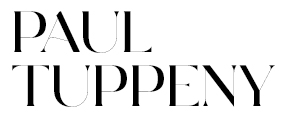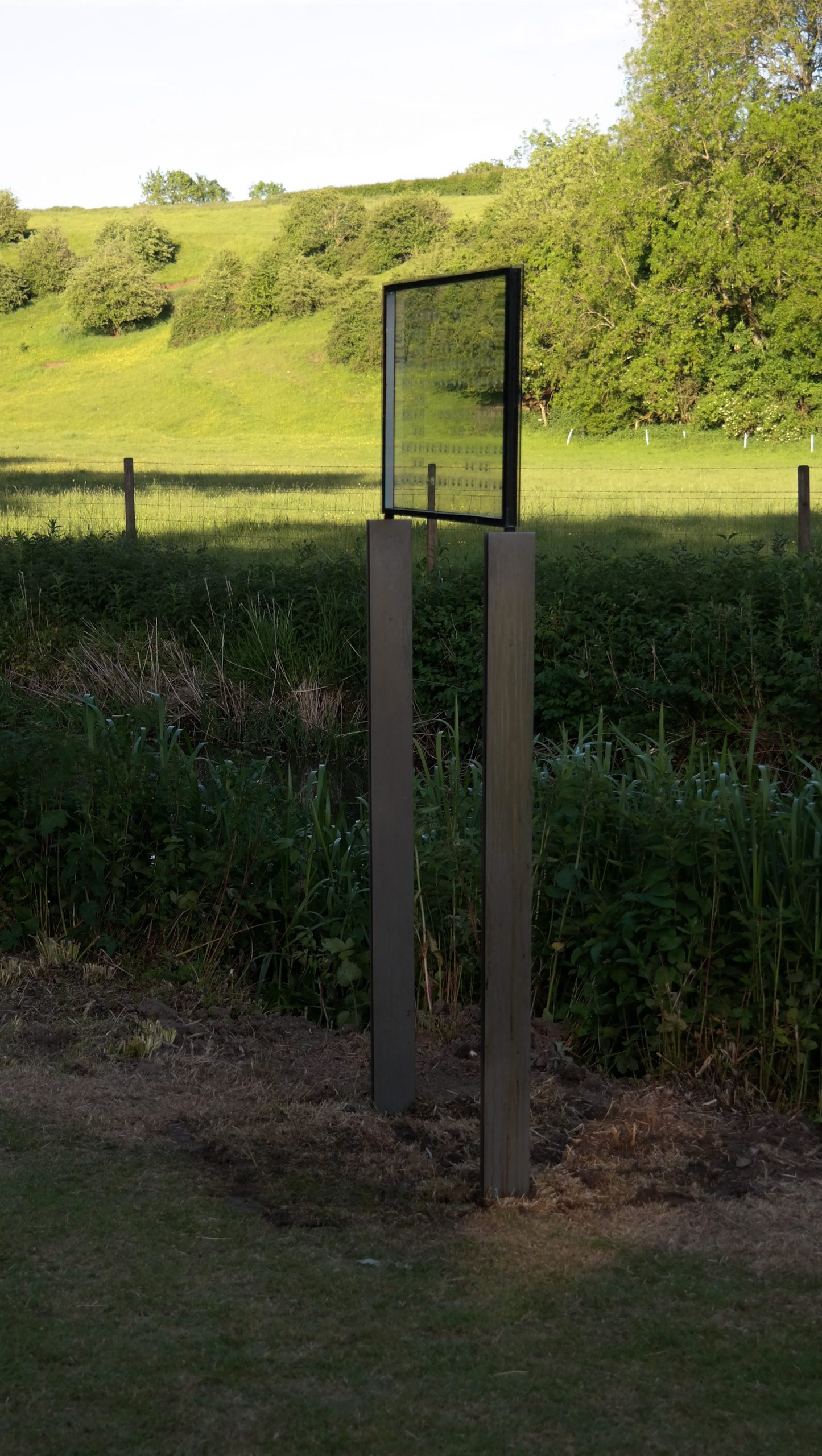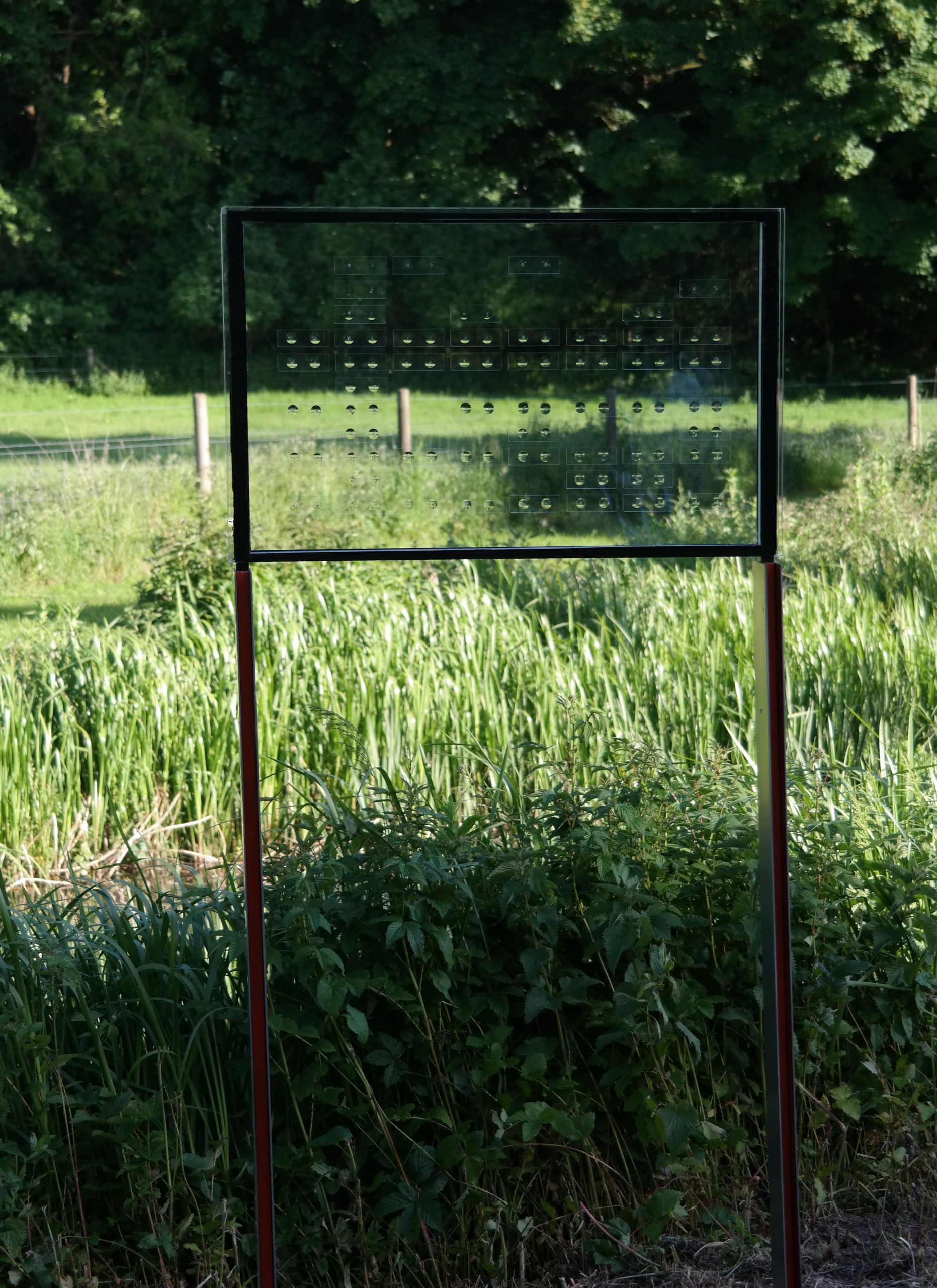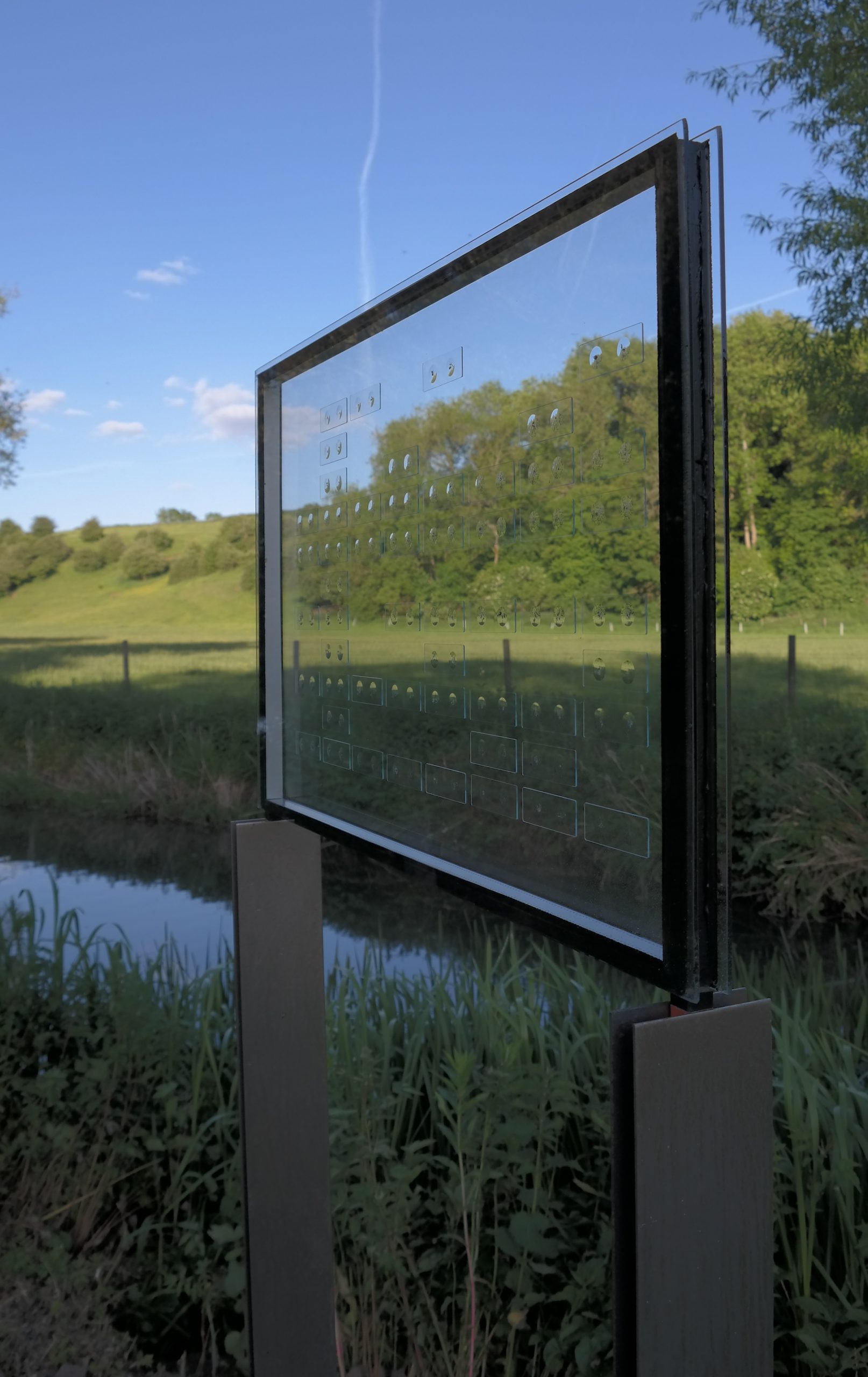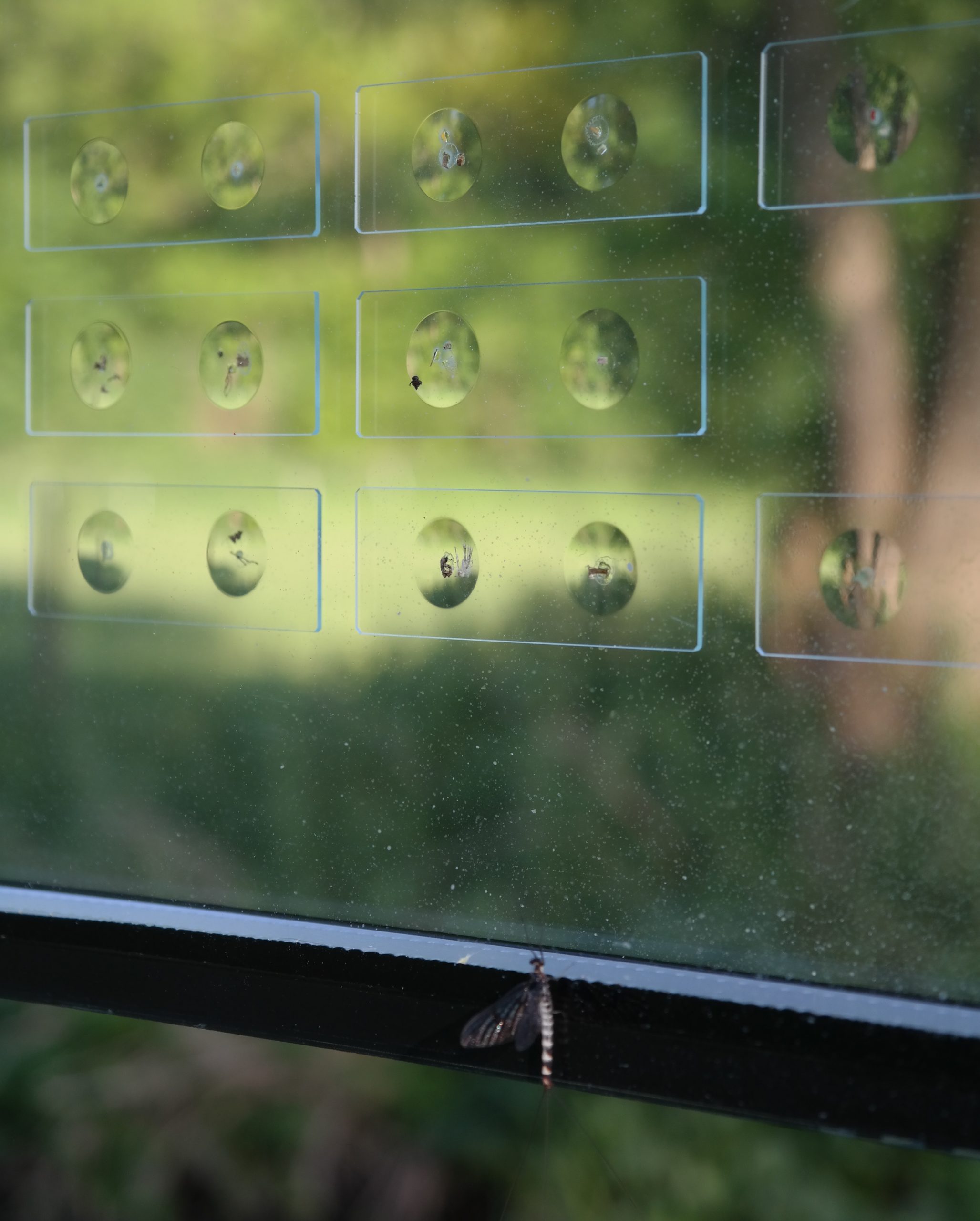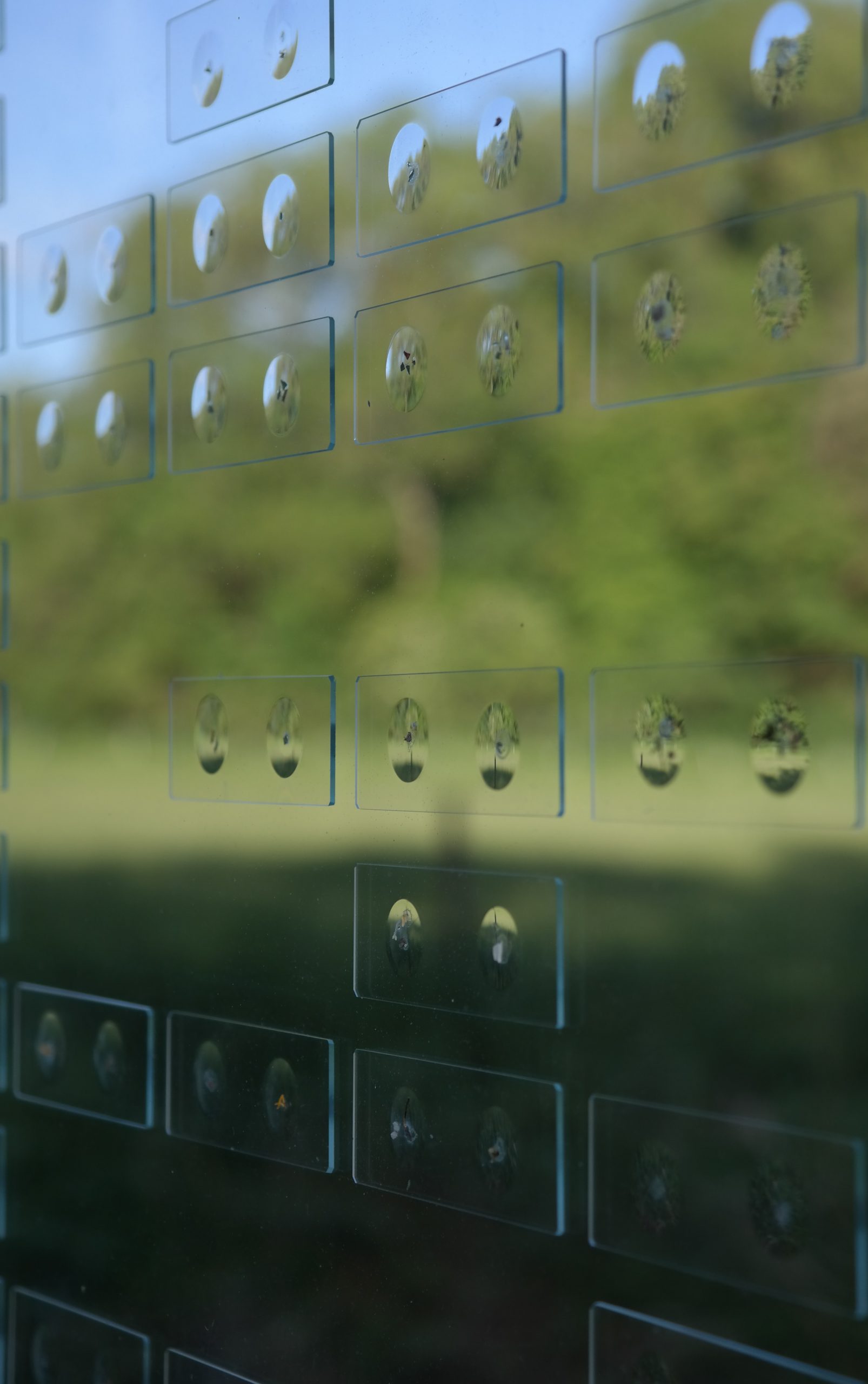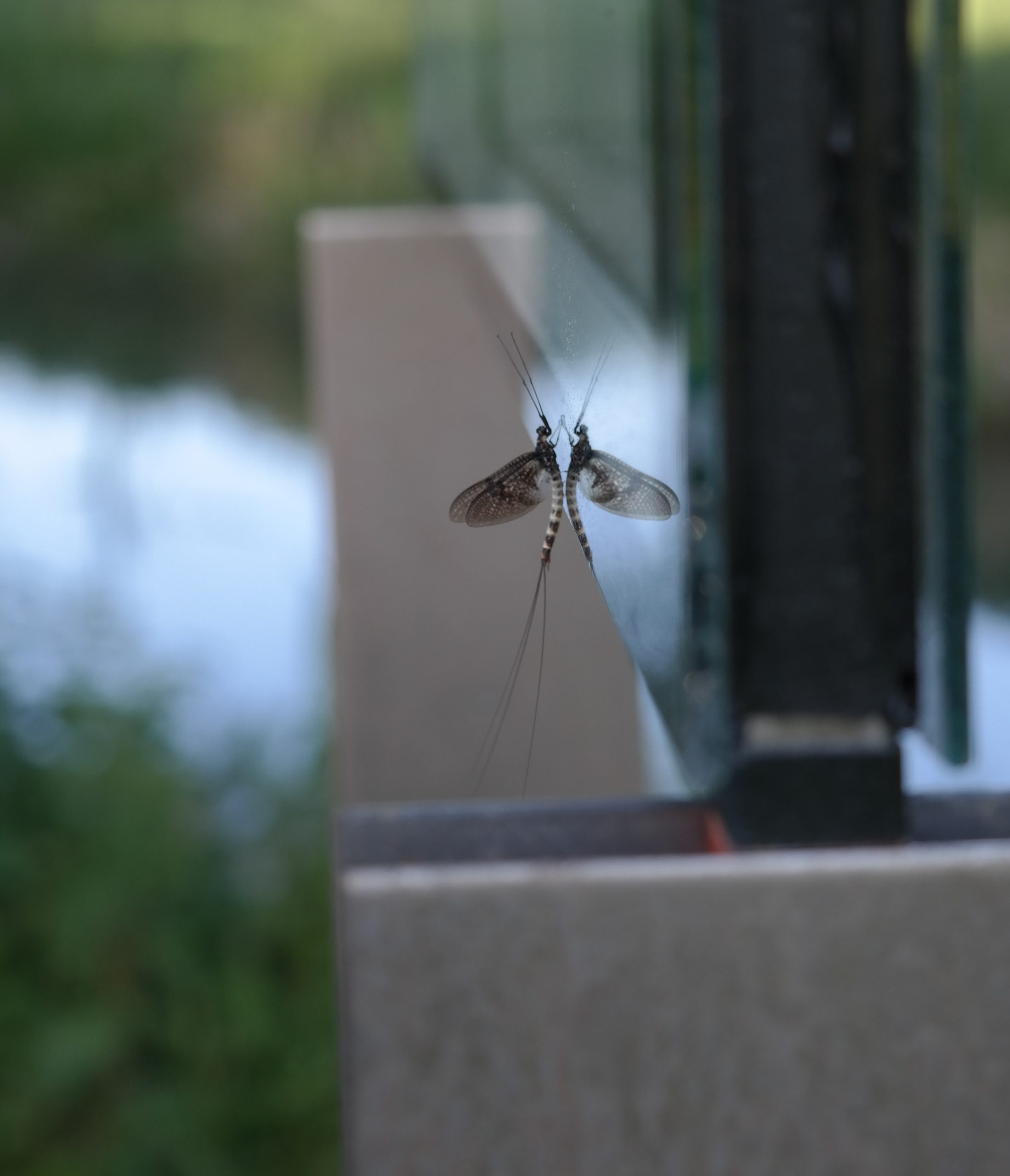“…the thrill of…eternity” (Landscape in DNA) Paul Tuppeny 2022
The title of the artwork is drawn from a statement made by Cezanne to his friend, Joachim Gasquet:
“Our art must render the thrill of [Nature’s] permanence… It must give us a taste of her eternity”.
Gasquet; Cezanne: A Memoir with Conversations, London and New York 1991 (originally 1921)
Description
The sculpture holds an array of microscope slides within the cavity of a double-glazed unit, the type normally used for windows in modern houses. Each microscope slide holds specks of material collected from the landscape that is visible through the ‘window’. The concavities of the microscope slides act as lenses and focus small portions of the view. The glass is supported at eye level on rusting steel legs.
Commentary
Our world is characterised by the changes brought about by natural processes; trees grow, fruit ripens, skin wrinkles. And yet it appears to us, as Cezanne remarked, a stable and enduring place.
The sculpture demonstrates two ways that permanence is achieved. The first is embodied materially in the glass sheets protecting the samples in the cavity between them and which are in themselves highly resistant to decay. The specks of natural material hold within them the second means of resisting change, through the DNA of their genomes which allow the plants and animals in the landscape framed by the window to endlessly replicate themselves.
The work developed from crime scene dramas where plotlines can hinge on the DNA information held in a single human hair. The fact is, the sculpture holds in its frame more information about the landscape beyond the window than any painting or photograph could ever hope to convey.
Each small sample collected from the landscape and held in the glass unit, carries within it the potentialities, or ‘nature’, of an organism as a living and growing thing. Whilst we cannot directly see this, we know this to be the essence of the landscape before us; this is the world as we know it, rather than as we see it.
The work is signed in the lower right corner with a hair from back of the artist’s hand.
